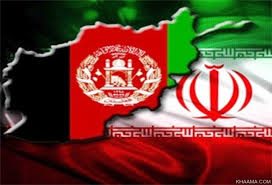Iranwire – Asylum law in Afghanistan was never ratified by the Afghan parliament before the Taliban’s takeover in mid-August. The only recourse asylum seekers currently inside the country have is the United Nations High Commissioner for Refugees. But the collapse of the state architecture into the hands of the Taliban and the flight of international forces and NGOs has left them even more vulnerable than before.

One of the countless political asylum seekers in Afghanistan is Homayoon Zarean, an Iranian artist and dissident who has been sheltering in the country for seven years. Now trapped there, with Kabul Airport under US control and land borders closed, he has no idea what to do next.
Zarian’s name made headlines in Persian-language media two years ago, when he went on hunger strike over the official indifference shown toward him and other political asylum seekers in Afghanistan. Although the former Afghan government promised his case would be addressed, it always came to nothing. Even the Afghan Human Rights Commission was unable to give him assurances.
Now 36 years old, Homayoon left Iran for Afghanistan in 2014. He had planned to move on to a safer third country but remains in limbo. A long-time student of the Iranian maestro Mohammad Reza Shajarian, he formerly worked as a professor of music at the Universities of Tehran and Isfahan but was then jailed for more than 12 months – between Isfahan, Evin and Rajaei Shahr Prisons – amid intensified anti-government protests.
Zarean told IranWire he was arrested by Afghan forces after entering the country, and spent a year in prison in Herat. “Afghanistan’s national security institutions take a dim view of the Iranians,” he said, “because of Iran’s interference and destruction in Afghanistan. I was arrested and tortured for espionage and sabotage. After investigations they realized they were wrong, and I was released.”
Zarean lived in the city of Herat for a while and then moved to Kabul to engage in cultural and artistic activities. He has performed at several theatrical, music and national events. But with the Taliban – a group historically opposed to the arts and music – now back in power, he is afraid of the consequences of continuing his trade. The Iranian government has treated the Taliban with caution so far and he fears this, too, could jeopardize his security.
“I am an artist opposed to the Islamic Republic, and the relationship between the Taliban and the Iranian government is the biggest threat to me,” he said. “I’m not sure if the Taliban will recognize my political asylum in Afghanistan. I didn’t dare stay in Kabul and have moved to another location. I haven’t told anyone where I live.”
Meanwhile international forces, diplomatic staff and agencies are leaving the country en masse together with their Afghan colleagues. The UN has said it is committed to ensuring the safety of asylum seekers, but Zarean says that many members of the Afghan Human Rights Commission staff and UN refugee agency are being evacuated too.
Neighboring countries such as Tajikistan, Uzbekistan, Iran, Pakistan and Turkmenistan have either suspended or reduced their consular activities in Afghanistan and refugees have been pushed back at the border. Despite this, both the country’s neighbors and the EU are braced for a wave of asylum seekers fleeing via land routes in the months to come.
Homayoon says he cannot see a future for himself in the current situation. It’s also unclear what the Taliban’s stance on political asylum seekers will be. “I just want to be transferred to a country where there is no war and insecurity,” he said. “In Afghanistan, we’re losing the support of all refugee organizations. We are in the most dangerous of situations.”
This article was written by a citizen journalist under a pseudonym.
 Shabtabnews In this dark night, I have lost my way – Arise from a corner, oh you the star of guidance.
Shabtabnews In this dark night, I have lost my way – Arise from a corner, oh you the star of guidance.



